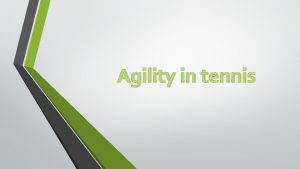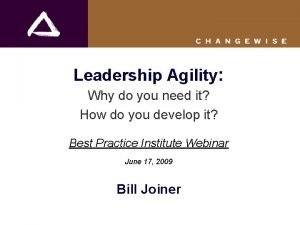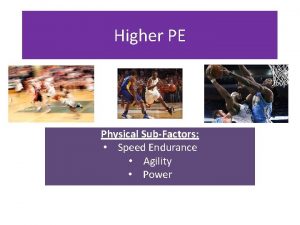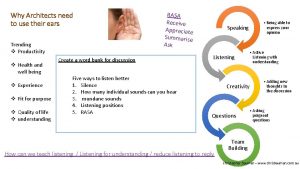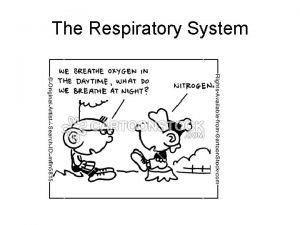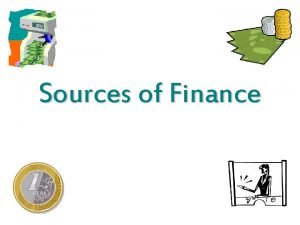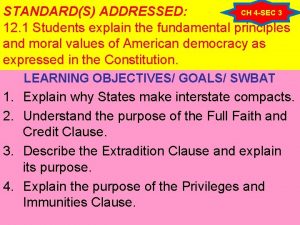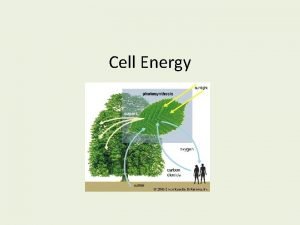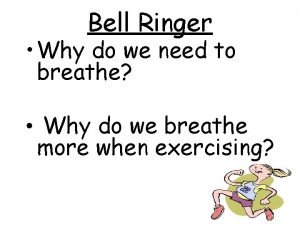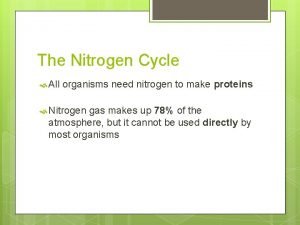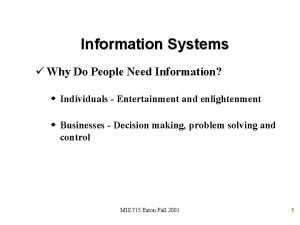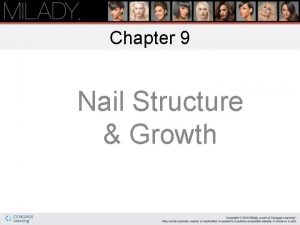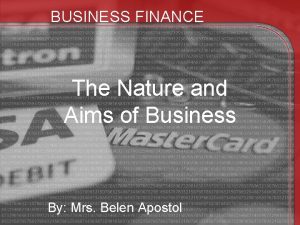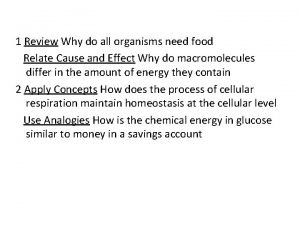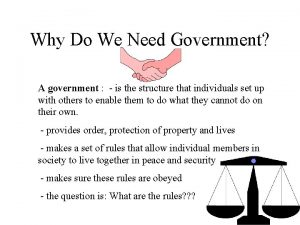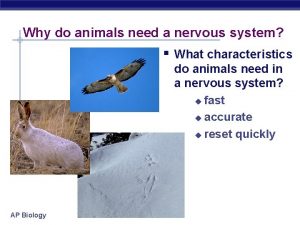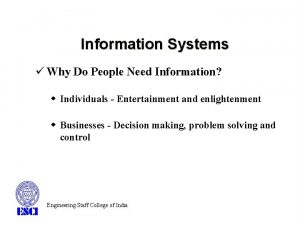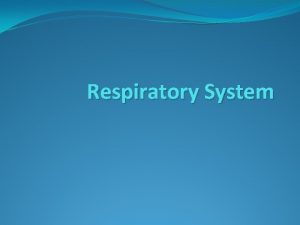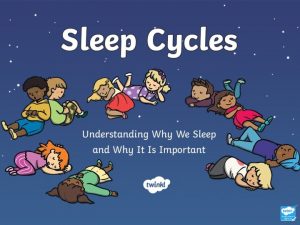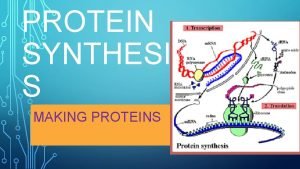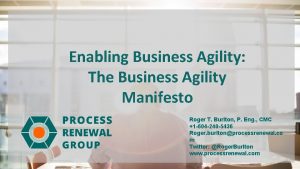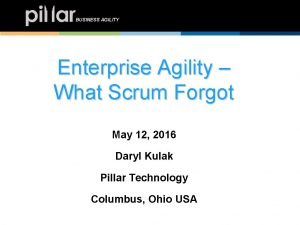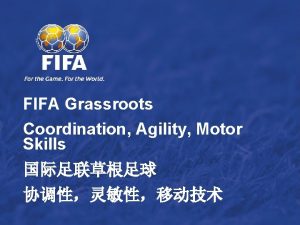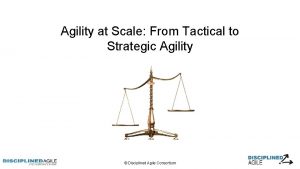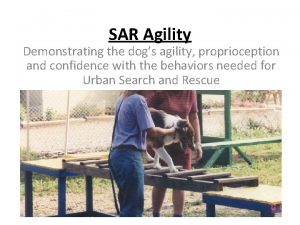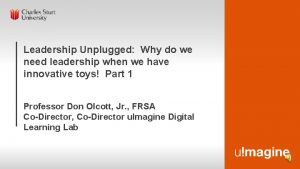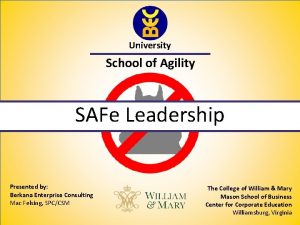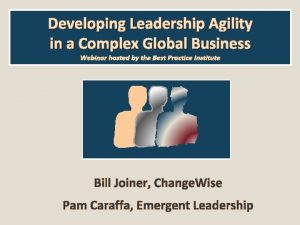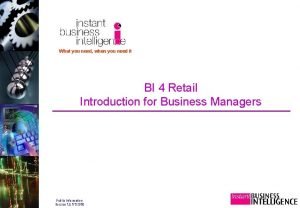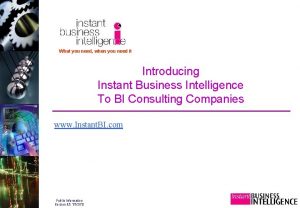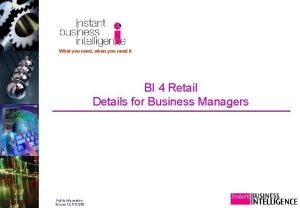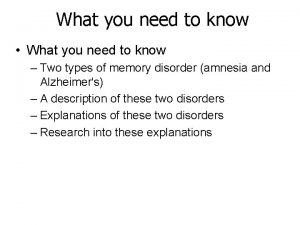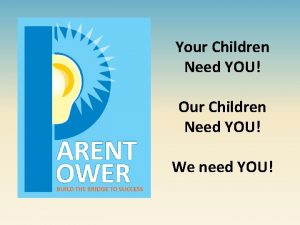Leadership Agility Why do you need it How







































- Slides: 39

Leadership Agility: Why do you need it? How do you develop it? Best Practice Institute Webinar June 17, 2009 Bill Joiner

1. Why Leadership Agility? 2. Levels of Leadership Agility 3. Developing a Culture of Highly Agile Leaders

The Agility Imperative The global organizational environment: • Accelerating change • Increasing interdependence and complexity Copyright © 2009 Change. Wise, Inc. – All Rights Reserved

CEOs See It “The world is more complex and fast-moving all the time, and that isn’t going away. ” Ed Zore, CEO of Northwestern Mutual “Most Admired” financial services company 24 years in a row Copyright © 2009 Change. Wise, Inc. – All Rights Reserved

American Management Assn. Study 80% of over 1000 executives around the world say: • Change is speeding up • High performers are more agile than low performers Copyright © 2009 Change. Wise, Inc. – All Rights Reserved

Economist Intelligence Unit Study on Organizational Agility Three key findings: • 90% said agility is essential for business success and growth • Yet most companies admit they are not agile enough • Most of the barriers to increased agility lie in the organizational culture Copyright © 2009 Change. Wise, Inc. – All Rights Reserved

London School of Economics Study of 50 agencies in 8 countries “Agile” government agencies significantly outperform other agencies on virtually every important metric, from productivity to employee and client satisfaction Copyright © 2009 Change. Wise, Inc. – All Rights Reserved

Pressing Need for Agile Teams Copyright © 2009 Change. Wise, Inc. – All Rights Reserved

“The ability to be agile enough is the gut issue in leading an organization today. ” James Mc. Nerney, CEO of Boeing Copyright © 2009 Change. Wise, Inc. – All Rights Reserved

What is Agility?

The Essence of Agility Focus Step back Gain a broader, deeper view Re-engage, take action Copyright © 2009 Change. Wise, Inc. – All Rights Reserved

Agility as Reflective Action { Step Back } { Re-engage } Copyright © 2009 Change. Wise, Inc. – All Rights Reserved

Stages of Personal Development Achiever Expert Conformer Operator Enthusiast Explorer Adult Stages Pre-Adult Stages Copyright © 2009 Change. Wise, Inc. – All Rights Reserved

Stages of Personal Development Synergist Co-Creator Catalyst Institutional “Ceiling” Achiever Expert Conformer Operator Enthusiast Explorer Pre-Adult Stages Copyright © 2009 Change. Wise, Inc. – All Rights Reserved

Stages of Personal Development Synergist Co-Creator Catalyst Institutional “Ceiling” Achiever Expert Conformer Operator Enthusiast Explorer Pre-Adult Stages Copyright © 2009 Change. Wise, Inc. – All Rights Reserved

1. Why Leadership Agility? 2. Levels of Leadership Agility 3. Developing a Culture of Highly Agile Leaders

Levels of Leadership Agility Institutional “Ceiling” • 10% Catalyst • 35% Achiever • 45% Expert • 10% Pre-Expert Copyright © 2009 Change. Wise, Inc. – All Rights Reserved

The Research Shows that … • In overall development, levels are not skipped • Leaders retain capacities developed at previous levels • While developmental stage is relatively stable, a leader’s level of agility can vary throughout the day • “Downshifting” to previous levels can be intentional or unintentional Copyright © 2009 Change. Wise, Inc. – All Rights Reserved

Tools for Assessing Agility Level • Grid in Chapter 1 or White Paper • Chapter 2: The Five Ed’s • Leadership Agility book • Leadership Agility 360 • Leadership Agility Bench Strength Assessment Copyright © 2009 Change. Wise, Inc. – All Rights Reserved

The Leadership Agility Compass Copyright © 2009 Change. Wise, Inc. – All Rights Reserved

Three Action Arenas • Leading organizational change • Improving team performance • Engaging in pivotal conversations Copyright © 2009 Change. Wise, Inc. – All Rights Reserved

Expert Capacities Awareness: Modest reflective capacity. Sees shades of gray. Analytical, not yet systemic Intent: To improve and accomplish things Self-esteem comes from problem-solving, developing their own views, standing out, giving advice, completing tasks Can be judgmental, perfectionistic, with limited ability to empathize, take others’ points of view Copyright © 2009 Change. Wise, Inc. – All Rights Reserved

Expert Agility – Leading Change Assumption: Leaders are respected and followed because of their authority and expertise Context-setting agility: Tactical. Focuses on incremental improvements within unit over which they have authority Stakeholder agility: Minimal attention to stakeholders. Either strongly assertive or accommodative Creative agility: One problem at a time. Low awareness of subjectivity Self-leadership agility: Strives to improve in technical or functional specialty. Little openness to feedback. Copyright © 2009 Change. Wise, Inc. – All Rights Reserved

Achiever Capacities Awareness: Robust reflective capacity. Thinks strategically. Sees systems in their environments Intent: To achieve desired outcomes in ways consistent with self-chosen values Strong identity. Self-chosen values and world-view. Self-esteem comes from achieving significant outcomes for self-chosen institutions More empathetic than Experts. Receptive to other views, if these help achieve their desired outcomes Copyright © 2009 Change. Wise, Inc. – All Rights Reserved

Achiever Agility – Leading Change Assumption: Leaders motivate others by making it challenging and satisfying to contribute to larger objectives Context-setting agility: ~3 -5 year outcome orientation. Change initiatives include analysis of strategic environment. Stakeholder agility: Recognition of the need for stakeholder buy-in. Mainly assertive or accommodative, with ability to compensate with the less-used style Creative agility: Sees connections between problems. Aware of need for good data to test subjective judgment Self-leadership agility: Strives to contribute to significant outcomes. Open to feedback to achieve these outcomes Copyright © 2009 Change. Wise, Inc. – All Rights Reserved

Catalyst Capacities Awareness: Able to reflect “in the moment, ” to pick up assumptions, feelings, behaviors formerly missed Intent: To create human contexts experienced as meaningful and satisfying, which enable sustained achievement of desired outcomes Interest in quality of life, self-discovery, and the process of experience. Aspirations are more long-term, visionary Sees others as humans first. Genuinely curious about and open to differing frames of reference Copyright © 2009 Change. Wise, Inc. – All Rights Reserved

Catalyst Agility – Leading Change Assumption: Leaders articulate an innovative, inspiring vision and bring together the right people to transform it into reality Context-setting agility: ~10 year vision. Initiatives include developing cultures that promote teamwork, participation, and empowerment Stakeholder agility: Proactive engagement with diverse stakeholders reflects belief that their input increases quality of decisions, not just buy-in Creative agility: Ability to try on frames of reference that conflict with their own. Aware that all data are shaped by a frame of reference Self-leadership agility: Wants work to have meaning for self and others. Proactively seeks and utilizes feedback Copyright © 2009 Change. Wise, Inc. – All Rights Reserved

Robert’s Story Achiever Catalyst Context-Setting Agility Focuses within Also aims to become industry and on raising best regional in North stock price America and be benchmarked by co’s in other industries Stakeholder Agility “Heroic” mentality. Sees stockholders and customers as the only stakeholders Involves a broad range of stakeholders to increase quality of strategic ideas Creative Agility Sees problem as being like past problems, therefore having difficult but familiar solutions Sees problem as unique. Develops strategies through creative problem solving Copyright © 2009 Change. Wise, Inc. – All Rights Reserved

1. Why Leadership Agility? 2. Levels of Leadership Agility 3. Developing a Culture of Highly Agile Leaders

Expert Leadership Culture • Managers operate within silos with little emphasis on cross-functional teamwork • Organizational improvements are mainly tactical and incremental • Managers are overly involved in subordinates’ work, fighting fires and interacting with them 1 -on-1 • Managers have little time to approach their own role strategically Copyright © 2009 Change. Wise, Inc. – All Rights Reserved

Achiever Leadership Culture • Customer-centric. Managers articulate strategic objectives and make sure they have the right people and processes in place to achieve them • Change initiatives are strategic as well as tactical, reflect an analysis of the larger environment • Managers work to develop effective teams, orchestrating them to achieve important outcomes • Cross-functional teamwork and consultation with key stakeholders are part of the culture Copyright © 2009 Change. Wise, Inc. – All Rights Reserved

Catalyst Leadership Culture • Animated by a compelling vision that includes a culture that is participative, empowering, candid, collaborative, and decisive • Senior teams are living laboratories that work together to create this kind of culture internally and to promote and encourage it in the organization • Leaders not only coach their people, they also actively solicit informal feedback and work to change their own behavior in ways that are beneficial to the organization and themselves Copyright © 2009 Change. Wise, Inc. – All Rights Reserved

Typical Leadership Culture • Catalyst leaders and pockets of catalyst culture here and there (sometimes) • Strong Achiever culture at the top levels • Strong Expert culture at the middle levels • High-potential and executive leadership development programs focus mainly at Achiever level • Overall: An Achiever culture best suited to an era of episodic change and moderate complexity Copyright © 2009 Change. Wise, Inc. – All Rights Reserved

Optimal Leadership Culture • Strong Catalyst culture at the top levels • Strong Achiever culture at the middle levels • High-potential and executive leadership development programs focus mainly at Catalyst level • Overall: An Catalyst culture best suited to today’s era of constant change and high complexity Copyright © 2009 Change. Wise, Inc. – All Rights Reserved

Potential Concerns • Who will do the tactical work? • Will we wind up with insufficient expertise? Copyright © 2009 Change. Wise, Inc. – All Rights Reserved

Executive Teams • Optimal starting point: Creating a new leadership culture within this team • Assess pace of change and degree of complexity in this team’s work environment • Determine this team’s current and optimal agility levels • What to continue and what to change to activate the desired level of agility? • Methods of change: Training, coaching, facilitation Copyright © 2009 Change. Wise, Inc. – All Rights Reserved

Coaching • Start with needed behavior changes and desired results, then add agility level • At any point in the coaching process, be clear about what action arena you and your client are focusing on • Use the Leadership Agility Compass to focus, as needed, on context-setting, stakeholder, creative, and self-leadership agility • Effective coaching implicitly stimulates self-leadership. Be sure to have your client explicitly learn and practice the self-leadership process before formal coaching is completed Copyright © 2009 Change. Wise, Inc. – All Rights Reserved

Coaching Questions Achiever Level Catalyst Level • What conditions in the larger context are driving the need for this change? • What is the scope of this • change? What will be changed and what will not be changed? • What are your desired outcomes for this change? How will you know that it is successful? • • What changes are needed in the culture and relationships between groups? What assumptions are you making about the scope of change that it might be useful to examine? What is a compelling vision that would have greater meaning and satisfaction for yourself and others? Copyright © 2009 Change. Wise, Inc. – All Rights Reserved

Leadership Development • Reflective action is the essence of agility and the primary way to develop higher levels of agility • The best vehicles for this purpose – whether coaching, workshops, or longer term programs – emphasize action learning • It is not necessary to segregate Experts, Achievers, and Catalysts • It is important to focus not only on learning new skills and behaviors but also on developing the mental and emotional capacities that make them possible. Copyright © 2009 Change. Wise, Inc. – All Rights Reserved
 Why is agility important in table tennis
Why is agility important in table tennis Hexagon agility test average results
Hexagon agility test average results Andreas carlsson bye bye bye
Andreas carlsson bye bye bye Expert achiever catalyst
Expert achiever catalyst Why willy why do you cry
Why willy why do you cry I wish you strenght
I wish you strenght Speech
Speech Why is agility important
Why is agility important Dont ask why why why
Dont ask why why why Transactional leadership vs transformational leadership
Transactional leadership vs transformational leadership Adaptive leadership theory
Adaptive leadership theory Situational leadership vs adaptive leadership
Situational leadership vs adaptive leadership Why architects need to use their ears
Why architects need to use their ears Shylock meaning
Shylock meaning Which principle
Which principle Why do we need to breathe
Why do we need to breathe Sources of finance
Sources of finance Why we need computer
Why we need computer Lamillae
Lamillae Why do we need arrays?
Why do we need arrays? Why might states feel the need to form compacts
Why might states feel the need to form compacts Do cells need energy
Do cells need energy Aerobic and anaerobic respiration
Aerobic and anaerobic respiration Why do we need water
Why do we need water All organisms need nitrogen to
All organisms need nitrogen to Why do people need information
Why do people need information Why do we need cracking
Why do we need cracking Name the major parts of the natural nail unit
Name the major parts of the natural nail unit Why do we need to study the nature and aims of business?
Why do we need to study the nature and aims of business? Why do organisms need food?
Why do organisms need food? Why do we need a government
Why do we need a government Why do animals need a nervous system
Why do animals need a nervous system Sieving method of separation
Sieving method of separation Why do people need information
Why do people need information Why do cells need oxygen?
Why do cells need oxygen? Why do plants need roots
Why do plants need roots Elements of indian ethos
Elements of indian ethos Why we need electricity
Why we need electricity Why we need sleep
Why we need sleep Why do we need cells
Why do we need cells
